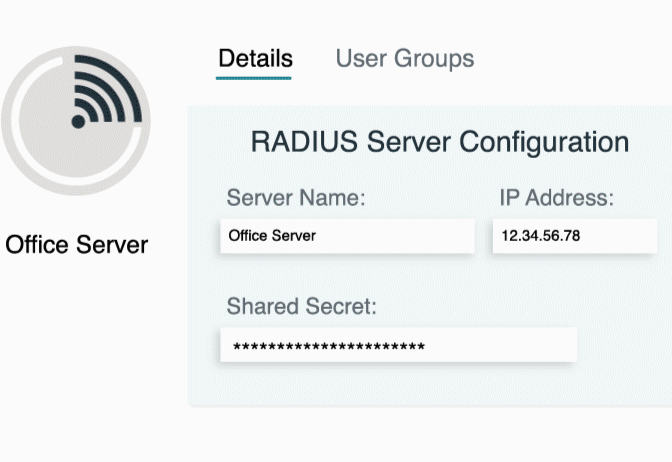Updated on February 14, 2025
Network Access Control (NAC) is an important cybersecurity tool that helps manage and secure access to a network. It works to block unauthorized users, protect sensitive data, and support a Zero Trust security approach.
In this post, we’ll break down how NAC works, its key benefits, and what to consider when deploying it.
Technical Definition and Purpose
Network Access Control (NAC) is a security framework that monitors and regulates device and user access to a network based on pre-defined policies. Its primary purpose is to authenticate devices and users while ensuring connected endpoints meet security requirements.
NAC solutions typically fall into one of two categories:
- Endpoint-based NAC solutions focus on controlling access through endpoint security tools, such as software agents installed on user devices.
- Network-based NAC solutions rely on hardware, such as switches or access points, to enforce policies for devices attempting to connect.
The choice between these solutions depends on organizational needs, infrastructure, and security goals.
How Network Access Control Works
At the heart of NAC are three key mechanisms—authentication, authorization, and enforcement. Here’s how the process typically unfolds:
- Authentication: When a device or user attempts to connect to the network, NAC ensures they are identified using credentials, certificates, or device attributes.
- Example: Integration with authentication services like RADIUS (Remote Authentication Dial-In User Service) to validate user identity.
- Policy Checks: After a device or user is authenticated, NAC checks them against set security policies. For example, it might verify if the device has the latest antivirus software or an up-to-date operating system.
- Access Enforcement: Based on compliance with policies, NAC grants, denies, or restricts access. Non-compliant devices may be quarantined or provided limited access to perform updates.
Key Components of NAC
- Policy Servers that evaluate compliance and enforce rules.
- Enforcement Points such as switches, firewalls, or wireless access points that execute NAC policies.
- Endpoint Agents (for agent-based solutions) installed on devices to gather compliance information.
NAC integrates seamlessly with directory solutions like JumpCloud to manage access permissions and streamline policy enforcement.
Types of Network Access Control
NAC solutions operate in different modes, each serving unique operational needs:
Pre-Admission NAC
- Evaluates devices before granting network access.
- Ensures that endpoints meet security policies before being allowed to connect.
Post-Admission NAC
- Monitors and enforces policies during active sessions.
- Applies additional controls, such as isolating compromised devices detected after access.
Deployment Approaches
- Agent-Based NAC: Uses software agents installed on endpoints to assess security compliance.
- Agentless NAC: Relies on network-based tools to scan and enforce policies without requiring endpoint installations.
- Hybrid NAC: Combines agent-based and agentless methods to balance coverage and complexity.
Security Benefits of NAC
Implementing Network Access Control offers several clear advantages for organizations and IT teams:
- Mitigation of Unauthorized Access: NAC ensures that only authenticated and compliant devices or users can access the network, reducing the risk of intrusion.
- Policy Enforcement: Security policies are consistently applied across all devices, ensuring compliance with organizational standards and regulatory requirements.
- Device Isolation: Compromised or non-compliant endpoints are quarantined to prevent them from jeopardizing the larger network.
- Support for Zero Trust: NAC aligns with Zero Trust principles by continuously verifying user and device identities while enforcing strict access controls.
While NAC provides robust security, organizations may encounter challenges during implementation:
- Complexity of Configuration: Developing and applying comprehensive policies can be time-consuming, particularly for networks with varying device types and platforms.
- Compatibility with Legacy Systems: Older systems and devices may lack compatibility with modern NAC solutions, requiring upgrades or alternative approaches.
- Deployment Disruptions: Poorly planned deployments can lead to downtime or unintended access issues, which can disrupt business operations.
Proper planning, thorough testing, and clear communication across teams can mitigate these obstacles.
Glossary of Terms
- Authentication: The process of verifying a user or device’s identity before granting access.
- Authorization: Determining the level of access or permissions granted to a user or device once authenticated.
- Policy Server: A central component in NAC that evaluates and enforces compliance with access policies.
- Endpoint Agent: A software module installed on devices to collect compliance data for NAC enforcement.
- RADIUS (Remote Authentication Dial-In User Service): A networking protocol that manages user authentication and access control.
- Zero Trust: A security framework that assumes no user or device should be inherently trusted, requiring constant verification.
- Quarantine Network: A restricted segment of the network used to isolate non-compliant or compromised devices until they are remediated.






